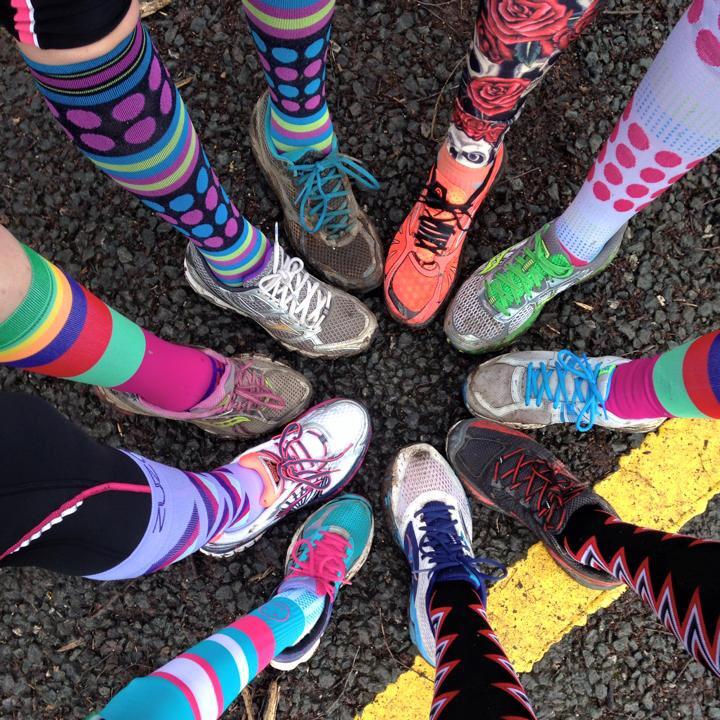
Compression socks have done a lot of good over the years. They are a fantastic tool in both the athletic and medical fields, improving circulation without side effects. Compression socks with 20-30mmHg are the most widely used pressure level, and for good reason.
You may have wondered who exactly should wear compression socks. The answer is straightforward: anyone who can benefit from good circulation should wear pressure socks, and a 20-30mmHg sock is a great place to start.
Many people associate compression socks with the elderly or with the treatment of diseases. However, they truly are for anyone who wants healthy legs and a healthy body.
Everyday Uses for Compression Socks
Compression socks provide support for overworked leg veins during times like pregnancy or high-intensity sports. By compressing the walls of the veins to increase pressure, upward blood flow is promoted.
Though compression socks do not cure diseases, they can relieve you of many symptoms and even prevent further damage. Oftentimes, compression socks are used for everyday activities to promote good health:
Travel
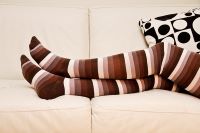
Did you know that sitting on a plane or in a vehicle for five hours or more increases your risk of developing blood clots? It can also make your legs feel uncomfortable, but you don’t need to put up with these troubles.
Compression socks are often used by travellers who want to relieve discomfort or tiredness in their legs while sitting for a long time. The pressure applied by the socks improves leg circulation, reducing your risk of blood clots during travel. Remember to put your compression garments on before you leave for the airport to avoid the hassle of putting them on in the cramped quarters of the plane.
Choose a color and style that you’ll feel travelling comfortable in. If the weather is especially warm or you’re headed somewhere tropical, try open-toe compression socks with your sandals.
Work

If you stand or sit for long bouts of time throughout the day, compression socks are a simple way to relieve swelling, prevent varicose veins and reduce pain. They promote better circulation in the feet and legs, soothing any pain in the extremities.
Because of this, compression hose and socks are popular with medical staff, retail workers and office employees. Feeling comfortable can help you do your job better, leaving you to focus on your work rather than on your feet and legs.
Regardless of work dress codes or your personal style, there will be a compression sock to meet your needs. Thinner compression hosiery or thicker compression dress socks are available to suit whatever your work style is.
Compression Socks for Nurses and Medical Staff
Careers such as nursing are especially demanding. Nurses spend most of their time on their feet helping patients and enhancing care. Shifts often last 12 hours. Unfortunately, being on your feet for this long takes a toll on your body. It is not uncommon for medical workers to develop edema, leg ulcers and varicose veins as a result of long hours on their feet. Compression socks aim to help people like nurses take care of their own leg and vein health.
Pregnancy
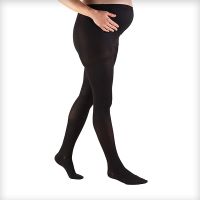
Pregnant women are yet another demographic that will benefit substantially from wearing compression socks or hosiery. They are at a higher risk of developing edema and varicose veins because of the increased weight and pressure on their legs.
During pregnancy, a woman’s body adapts by retaining more fluid. This fluid helps increase blood volume to support the growing fetus. However, this extra blood also puts additional pressure on the mother’s veins. When the pressure becomes too much, the result can be peripheral edema and varicose veins.
The legs are commonly affected by pregnancy because it is more difficult to push blood upwards from the legs than from other parts of the body. The more the fetus grows, the more blood volume that is needed to sustain both the mother and the baby’s health. As such, pregnant women in their last trimester are at a greater risk of developing these venous difficulties.
Diabetes

People who suffer from diabetes will get a lot out of wearing a pair of compression socks. The common symptoms of diabetes can be soothed or eliminated with a quality pressure sock.
Excessive Sweating
Because diabetes affects hormones, cardiovascular function and the body’s stress management response, those with diabetes tend to sweat abnormally. It can also become difficult for the body to maintain a steady temperature and regulate sweat production. In type 1 diabetes, this is due to low blood sugar levels and diabetes-related nervous system damage.
A compression sock made of antimicrobial and moisture-wicking fabrics will prevent odors and sweat from accumulating. Good quality compression socks are made of breathable fabrics that help to manage sweat and prevent overheating.
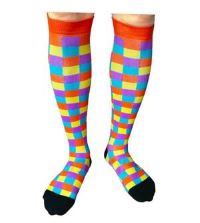
Swelling
Another symptom affecting diabetic patients is swelling as a result of poor circulation.
Since diabetes inhibits the production of insulin, a hormone made by the pancreas that assists cells in the absorption of sugar, excess sugar builds up in the blood stream. When this condition is not carefully managed, it will damage the lining of the blood vessels and cause poor blood circulation.
When the blood does not circulate properly, fluids become trapped in the tissues–especially in the legs and feet. Compression sleeves and compression hose boost your circulation by providing gentle and steady pressure to the legs. Both swelling and leg discomfort can be alleviated as a result.
Popular Articles on ComproGear
Best Compression Socks for Nurses Best Nurse Compression Socks
What Are The Best Socks for Circulation Best Socks to Help With Circulation
Compression Stockings mmHg Chart Compression Stocking Strengths
Super Plus Size Compression Stockings Obese Compression Socks
Medical Compression Socks Compression Socks Medical Grade
Best Compression Socks for Sitting All Day Are Compression Socks Good for Sitting All Day?
Best Compression Socks for Ankle Swelling Do Compression Socks Help With Ankle Swelling?
Plus Size Compression Socks Best Plus Size Compression Socks
Best Compression Socks for Elderly Compression Socks for Edema in Elderly
Compression Socks for Gout Socks for Gout
Numbness and Circulation
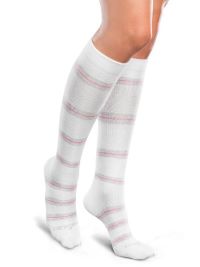
Numbness in the feet and legs can result from diabetic blood vessel damage, making it difficult for a person to feel sprains, cuts and other injuries. Pre-emptively wearing compression socks can prevent nerve damage by facilitating healthy circulation in the feet.
Open-toe compression socks may be ideal for those with diabetes, as you will be able to monitor yourself for poor circulation and do regular visual checks on your toes. However, if you have already experienced extensive diabetic blood vessel damage, talk to your physician first before wearing compression socks. Severe cases of diabetic peripheral neuropathy can be exasperated by compression socks with high pressure ratings.
Types of Compression Socks
There are three main types of compression socks available. You’re most likely to see 20-30mmHg knee-high socks in pharmacies or online if you are purchasing without a doctor’s prescription.
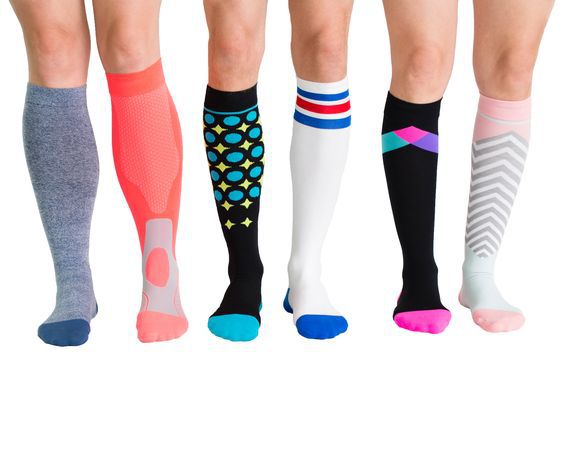
Graduated Compression Stockings
Graduated compression stockings are a type of medical compression sock. These stockings get their name from the graduating levels of pressure across the sock, beginning as higher pressure around the ankles and gradually easing off towards the knee. Having the level of compression strongest at the ankle ensures circulation of blood upwards towards the heart.
This type of stocking will requires a professional fitting and a prescription. There are two main types of graduated compression stockings prescribed in the medical field:
Thigh-High Graduated Compression Stockings
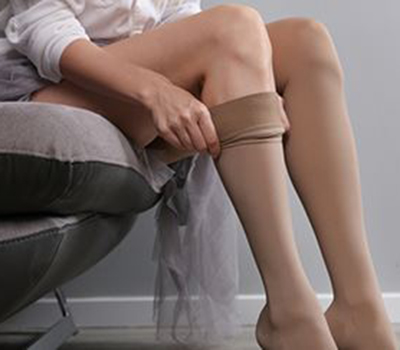
Graduated compression socks that extend up to the thighs help to reduce the pooling of blood in the legs. They are also your best bet for preventing orthostatic hypotension, a condition that suddenly decreases your blood pressure upon standing and causes dizziness.
Knee-High Graduated Compression Stockings
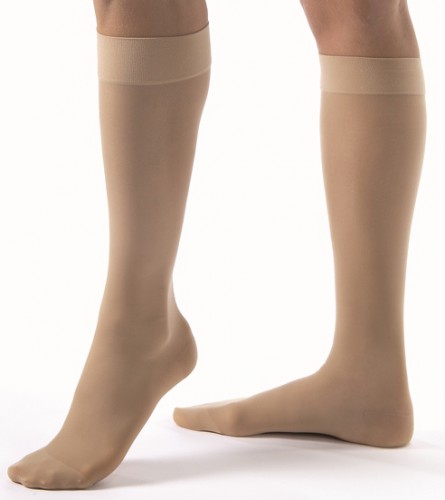
Ending just below the knees, knee-high graduated compression socks and stockings help to reduce symptoms of peripheral edema (swelling of the legs) due to a build-up of fluid. Knee-high stockings can also be a bit easier to put on than thigh-highs.
Non-Medical Support Hosiery
A second type of compression sock you will encounter is referred to as non-medical support hosiery. This type of compression sock or stocking can be purchased over-the-counter through ComproGear and in select pharmacies. They exert milder pressure than medical grade compression socks and are ideal for mild cases of swelling and pain.
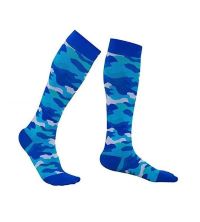
No prescription or professional fitting is required because the pressure rating is considered low enough to pose a minimal health risk. Flight socks and support hosiery are commonly used by people who want to prevent blood clots or simply relieve heaviness and discomfort in their legs.
Over-the-counter compression socks come with many options:

- Knee-high compression socks are the most common cut of sock and will be available in your choice of fabric thickness.
- Thigh-high compression hose are also available for those who suffer with swelling or varicose veins above or behind the knees.
- Thick, cushioned compression socks are ideal for athletes and can be purchased without a doctor’s prescription.
- Compression hosiery made of thin, ultra-sheer pantyhose material is ideal for wear with dresses or under pants.
- Pressure socks in a wide variety of colors and patterns that embody current fashion trends are now available.
Anti-Embolism Stockings (TED Socks)
This last group of compression socks are called anti-embolism stockings. You may have heard of them referred to by their brand name, “TED socks”. These are specifically designed to reduce the development of deep vein thrombosis (DVT).
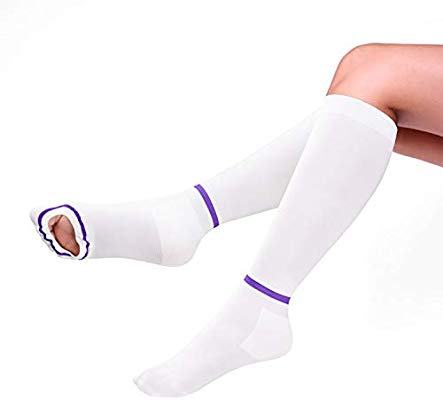
DVT is a serious condition that occurs when a blood clot forms deep in the veins of the lower legs or thighs. Deep vein thrombosis can cause swelling near the site of the blood clot, usually in your foot, leg or ankle. Pain in the affected area, hotness, discoloration and cramping in your thighs and legs are symptoms that accompany DVT.
Similar to graduated stockings, anti-embolism stockings offer graduated levels of compression. They differ from other types of graduated compression hose since they are designed for patients who are not mobile.
Anti-embolism stockings offer a lower pressure rating, usually graduating from 8mmHg up to 15 mmHg. They are primarily sold in white.
Another way to tell anti-embolism stockings apart from regular graduated compression hose is to look for the peek-a-boo toe hole that allows nurses to check the circulation of patients wearing TED hose.
TED socks are provided to patients in one of three different styles:
- Knee-high TED socks.
- Thigh-high anti-embolism stockings. These are used by patients who require full compression on one or both legs and are especially good for people who are at risk of developing deep vein thrombosis. They may incorporate the use of silicone bands at the thigh to reduce slipping.
- The third option is similar to pantyhose, going all the way up to the waist. These are commonly worn by people who need full leg support for both legs.
Levels of Compression
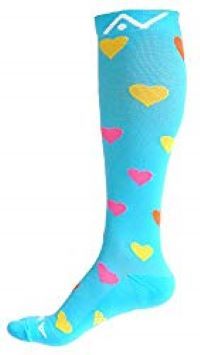
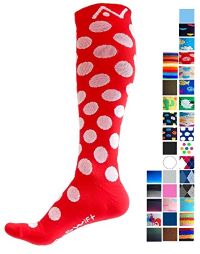
One of the most intimidating things about compression socks is figuring out which pressure level is the right one for you. Unlike regular socks, compression socks offer a variety of pressure levels to cater to your unique health and wellness needs. People often choose the wrong level of compression, which is hazardous for certain conditions.
If you pick a level that is too tight, you may feel your circulation being cut off around the sock, preventing you from wearing the compression hose for very long. If you pick a level that is too gentle, you will not gain the relief you were hoping for from your compression wear.
Whether you are new to compression wear or are in search of your next pair of compression socks, it’s a good idea to learn about available levels of compression before making a purchase. Let’s find out which compression rating is suitable for you.
Understanding Pressure Ratings
Compression levels are measured in millimeters of mercury or mmHg. This is a measurement of pressure that is also used in measuring blood pressure. For example, you may see the pressure rating of a sock written as 20-30mmHg.
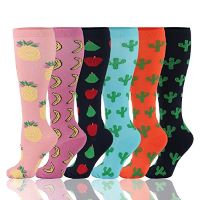
Compression socks that have graduated pressure with the most pressure at the ankle and the least pressure at the knee are a good option for people with troublesome circulatory conditions. The graduated pressure encourages blood circulation up and out of the legs, towards the heart.
While a graduated compression sock will likely require a prescription from your doctor, a uniform compression sock with a pressure rating of 20-30mmHg can be purchased over-the-counter.
8-15mmHg (Mild Compression)
This is the mildest form of pressure socks on the market today. They offer relief from mild pain, swelling and mild fatigue. If your legs often feel tired and ache after work, then a pair of 8-15mmHg compression socks may do the trick. They do not require professional fitting and are easily available online and in select pharmacies.
15-20mmHg (Medium Compression)
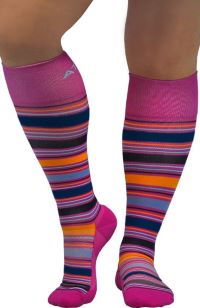
If you find that 8-15mmHg compression socks are just not doing it for you, try 15-20mmHg. This low-level pressure garment is great for preventing leg fatigue after long periods of traveling or standing. They come in knee-high, thigh-high and a full-pantyhose variation.

Minor swelling in the legs, ankles and feet during pregnancy can also be prevented with a 15-20mmHg compression sock. The firm pressure of compression stockings support the veins to prevent varicose veins and spider veins.
You can find this level of compression sock over-the-counter. Pick up your own pair and keep your legs energized.
Medical Grade Class I, 20-30 mmHg
This is a very common level of compression wear. It is a perfect balance of mild and firm, generally tolerated by all wearers. A 20-30mmHg sock can be used in the management of less severe diseases or for everyday pain relief.
Pregnant women can benefit from this level of compression, too. It helps to relieve swelling and pain by boosting circulation throughout the legs. A 20-30mmHg pressure sleeve will also help prevent the formation of varicose veins and spider veins in the legs.

For those who struggle with orthostatic hypotension and superficial thrombophlebitis, an inflammatory condition that is caused by a blood clot just below the skin, a 20-30mmHg sock can provide enough compression to ease symptoms.
Since this pressure rating is the most popular, manufacturers have gone out of their way to make them in fun colors and patterns that embody popular themes, pop culture icons and style trends. They are especially popular amongst nurses and medical professionals, since workers in these professions are on their feet for long hours.
Athletic styles of 20-30mmHg compression socks are available with all sorts of additional features like padded heels, extra arch support and sweat-wicking material.
Medical Grade Class II, 30-40 mmHg (Extra Firm)

This is a strong pressure level recommended for patients who have severe leg and circulatory symptoms. A doctor may recommend a 30-40mmHg compression sock to people who have deep vein thrombosis, lymphedema, post-thrombotic syndrome (PTS), superficial thrombophlebitis and orthostatic hypotension. It can also help in the management of active ulcers.
With a high level of compression, this sock can only be accessed if you get a prescription from a physician. You will likely need a proper fitting by a professional, too. Pick a sock made of fabric that is durable and will withstand stretching.
A 30-40mmHg compression stocking can also work to prevent varicose veins, tired legs and achy feet. After having a surgery to remove varicose veins, many patients are asked to wear these compression socks to prevent the re-forming of varicose veins.
Medical Grade Class III, 40-50 mmHg
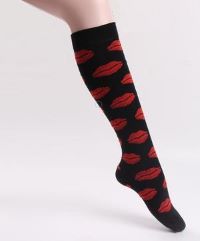
This is the strongest level of compression available and should only be worn when recommended by a doctor. Ideally, this type of compression is used for more severe cases of varicose veins and leg ulcers.
They are also used in the treatment of severe edema and lymphedema. Patients with a history of blood clots may also benefit from them as the firm pressure prevents deep vein thrombosis.
Tips For Putting On Compression Socks
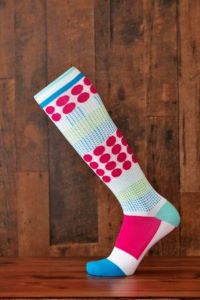
Compression socks need to fit tightly against the skin in order to apply firm pressure. There are a few things you can do to make your compression therapy more comfortable:
- Prep your feet and legs. During the summer, the hot weather will make you sweat. Putting on compression socks with sweat, water or even lotion on your legs will be difficult. You can ease the process by applying a coat of talcum powder or corn starch. The powder will absorb moisture and make your legs smooth, allowing for easy donning.
- Do it in the morning. Ensure that you put on your compression socks early in the morning before you begin your day. Your legs will be much less swollen first thing in the morning, making it easier to put on your compression hose. If you do walk around before donning your socks, elevate your legs for 15 to 20 minutes to relieve pressure and reduce swelling, then try putting the socks on.
- Use back support. Finally, when putting on compression socks, ensure that you sit in a chair with firm back support. Putting on compression socks is a little harder than donning regular socks and you may need to tug them or brace yourself against the chair. Having good back support can give you a sturdy base to work from.
Washing Compression Socks
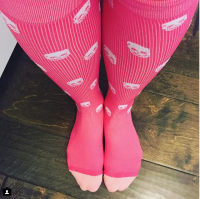
A huge part of compression therapy is taking good care of your compression socks. When you care for your compression socks well, they can last up to six months, even with everyday wear.
However, if you do not properly wash and dry the compression socks, they will lose their elasticity and will no longer perform as they should.
To care for your compression socks, hand wash them with a gentle soap and cool water. Hot water can cause the elastic fibers in the material to relax, reducing the sock’s compression abilities.
The heat of a machine dryer can also cause your compression socks to lose their effectiveness. Rather, opt to hang your socks to air dry overnight.
